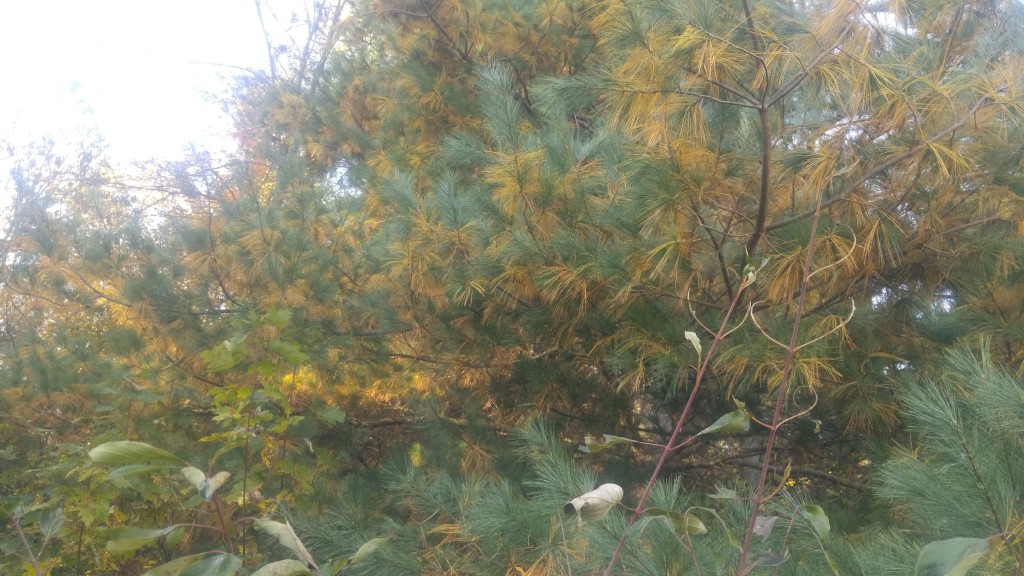Our 2019 growing season is over. The Detroit/Pontiac National Weather Service office made the official announcement declaring October 18th as the date, so no more frost/freeze advisories until next spring.
So now we are into the third week of October and the leaves on the trees are all turning color except for the evergreens. “What? Wait!, the needles on my pine trees are turning yellow. What’s wrong?”
Even though pines, spruces, arborvitaes, firs, hemlocks and others are called evergreens, that doesn’t necessarily mean all of the needles are always green all of the time, forever.
A certain amount of color change on evergreens is a normal event this time of the year. Some years it is more pronounced than in other years. This year many of my white pines are turning a vibrant yellow that can be seen from quite a distance away. The yellow-colored needles next to the fresh green are very attractive but could be a cause of concern for those not aware of this natural occurrence.

This particular white pine tree has a large number of yellowing needles. The needles on the ends of the branches are all green indicating a healthy tree.
Later on in the season, all of the yellow needles will drop from the trees and add to the pine needles collected at the base of the trees contributing to a healthy mulched layer. It’s nature’s way of making sure pine trees have a healthy soil environment. Very few, if any, other plants will grow in this mulched area eliminating competition for growing space and nutrients.
All of that mulch started out as green needles that eventually turned yellow and fell. Because needles are thin they are not blown around as far by the wind like the leaves from deciduous trees. Once they land, they tend to stay put.
My cedar trees, on the other hand, are not turning color this year. During some years, some of their leaves will turn a tan color. Virtually all evergreens go through this process in one form or another.
Don’t confuse this with pest problems. Things like bud worms will cause symptoms of yellowing or die back from the very tips of the trees where the leaf buds are located. The natural seasonal yellowing takes place on needles located away from the tip of the branches. I’ve also seen evergreens damaged by lawn weed killers. Trees poisoned by an overdose of lawn chemicals will drop needles too.
Bob